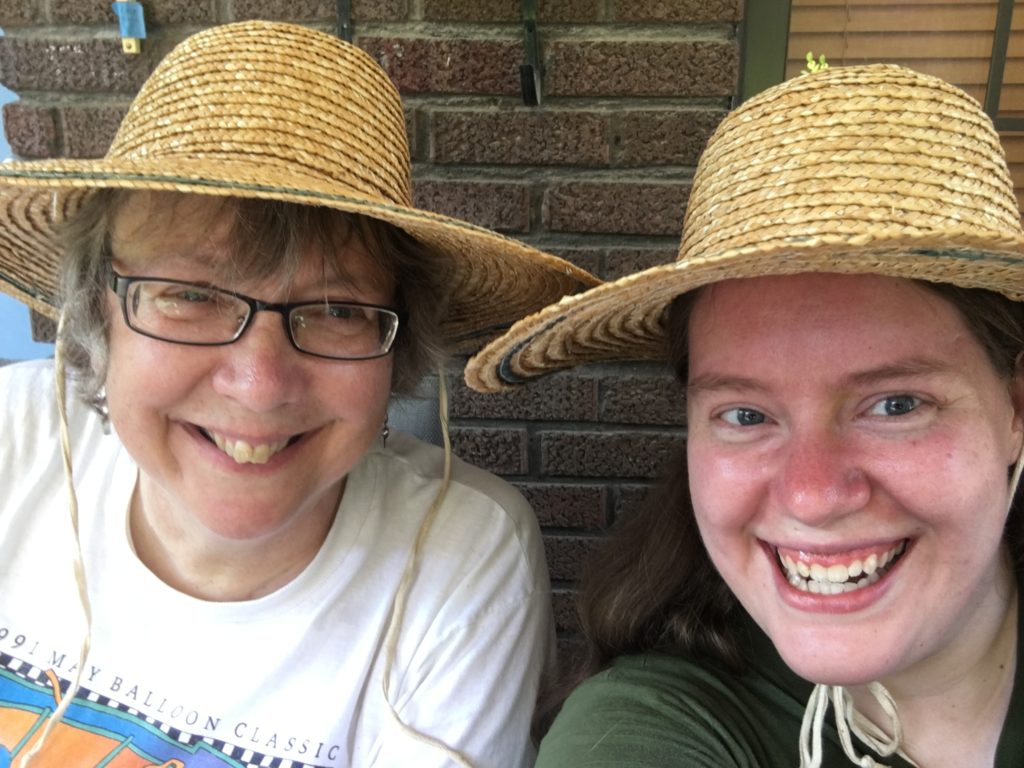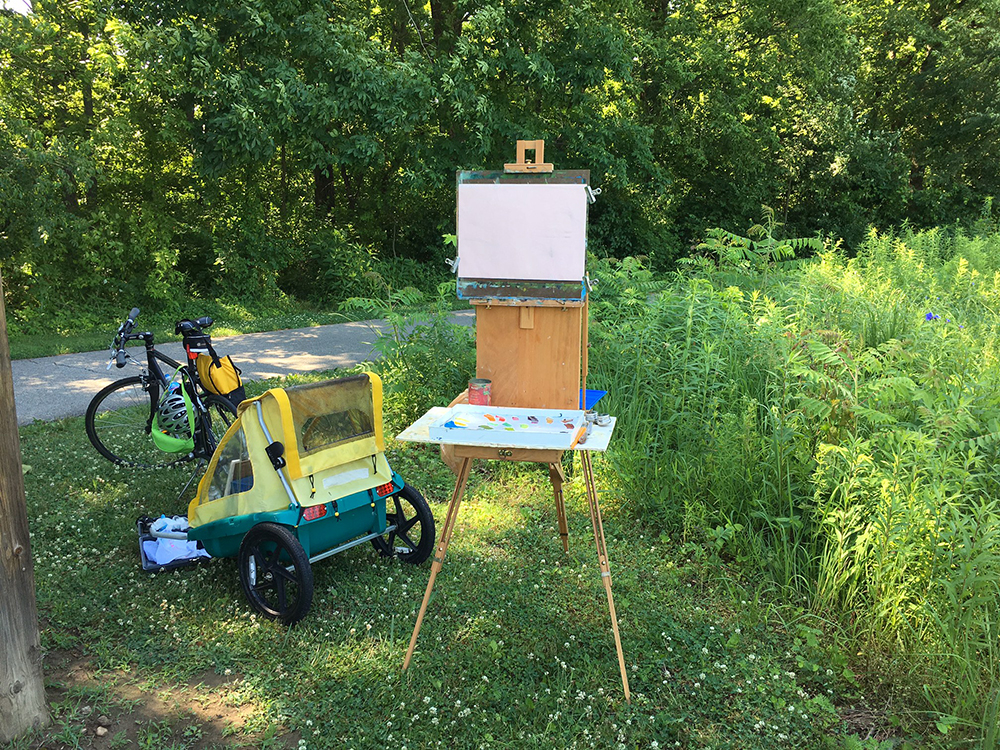Just Go Outside and Play
The serious work of children is play, and the work of artists is also a kind of serious play, equally wonder-ful and frustrating. A child's intensity of gaze, turned toward observation of ephemeral elements of light and atmosphere, undergirds my outdoor painting, as I work to interpret the changing light and fleeting colors that my eye sees but my camera cannot capture.
–Barbara H. Knuckles, Just Go Outside and Play, Exploring Ephemera en Plein Air
In Junior High, when we researched careers, I wanted to be an artist, a philosopher, or a National Park Ranger. In no particular order. Or maybe a writer as a distant 4th option.
I grew up around art and my dad taught me the basics of painting, but I did not paint that much at home. Herron School of Art was the first time I was able to do art full time, and was exposed to all kinds of media. I first wanted to be a painter, but was not that interested in becoming an abstract expressionist, which was the style of the day. I discovered lithography while majoring in graphic design, and switched my major to printmaking. Since then, I have jumped between all kinds of painting, drawing, printmaking and mixed media. Most of my mixed media work has been on printmaking paper, incorporating acrylic painting media, drawing, pastel, and collage.
My daughter, Bethany, (also an artist and Herron alum) and I were taking a life drawing class together through the winter, and I had been painting with acrylic on primed paper. The longest poses were 25 minutes, and I found it exhilarating and freeing to make a painting of some sort in 25 minutes, and then be done, with no way to go back and "fix" the painting. Paper was the ideal media to work quickly and then move on without worrying about expense or storing a stretched canvas. My last studio paintings had been rather long, arduous affairs and I was not having much fun with them. The perfectionist in me was stealing my joy. These new quick, all or nothing paintings took me back to the fresh, quick, less laborious way I had worked earlier in my career, throwing caution to the wind and not worrying too much about the outcome.
In April, my husband and I camped our way to Austin and back. I took my acrylics and did some quick paintings along the way, the first time I had painted on a vacation. My dad frequently painted during our camping excursions, but I could not imagine juggling camping, kids and painting on our family trips. I painted a sunset from a dock at a reservoir where we camped in Oklahoma, and picked the gravel out of my palette the next morning when I flipped it on the beach while painting the sunrise.
When the life drawing classes ended for the summer, we agreed to continue meeting as if for class, and shifted outdoors to paint for the summer. My dad is a landscape painter, but I had never been that interested or felt successful with that subject. My interests and strengths have been figurative: people and animals. However, when we began to paint outside, I decided to paint the things that interested me and set aside my own internal expectations of how they should be done. What did I love about the outdoors? Light, atmosphere, clouds, sky colors, weather, water reflections, a sense of place and time in the moment rather the subject itself. I love my dad's work, but needed to give myself permission to go a different direction. At first, I wanted to force myself to paint really quickly, to choose what I liked about the scene and try to nail it down, even it meant ignoring a lot of the rest of the visual information. Besides, the light that I loved most shifted so quickly that I lost the affect if I lingered too long trying to get things "right."I also found acrylics frustrating. So I shifted to oils but continued to paint on primed paper. I studied my dad's paintings to try to figure out how to paint trees the way I wanted them to look, but continued to select my subject and compose according to my own inclinations.
After a few excursions, we learned to find a shady spot, to avoid standing in the sun, and to bring serious bug spray. We've experimented with ways to haul our stuff, and Bethany went back to digital painting after figuring out how to use a box to create enough shade to be able to see her computer screen. We pulled out some straw hats that my mom had given my kids and adopted them as our painting hats. We've gotten soaked and met at the crack of dawn.
I am not a romantic, seeking the most dramatic burst of sky-glory. Instead, I am interested in the subtleties, the varied grays of storm clouds and the soft, indeterminate blends from orange to blue at dawn and dusk. Most of the small paintings came from this quest, as I sat at our back yard picnic table early in the morning or at dusk and tried to catch the shifting colors and clouds, painting one 5 1/2 by 7 after another as fast as I could. Ordinary water reflections capture my interest, too. And as I have worked outdoors, I've begun to see the diversity of texture and color in what I have always considered the monotony of all-over green of Indiana summer. I'm originally from Northwest Indiana and have spent countless hours driving on I-65 between Indy and my parents. Some find that landscape hopelessly boring. But I love the stage flat scenery the steps back into the distance, and the colors of ditch and field that compose the bottom edge of the view, while the sky fills the majority of the frame. The small bits of preserved prairie at River Road Park and Ritchey Woods remind me of childhood explorations. I've found surprising beauty in the simplicity of land, water, field and trees and sky.






